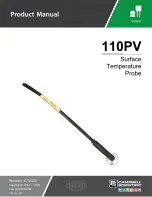
3
2. Einleitung
Die Oberleitung von Viessmann kann für alle im
Handel befindlichen Gleissysteme wie z. B. Mär
-
klin, Fleischmann, Roco, Kato, Arnold oder Tillig
eingesetzt werden.
Alle Viessmann-Oberleitungsmasten sind aus Me-
tall gefertigt. Durch die Verwendung einer Schwal-
benschwanzführung als Befestigungselement zwi-
schen Fuß und Mast ist die Oberleitung sehr ein-
fach zu montieren und erhält eine große Flexibili-
tät bei einem Höchstmaß an Stabilität. Auch beim
späteren Austausch von einzelnen Fahrdrähten
oder Streckenmasten ist dieses System sehr ein
-
fach zu handhaben.
Durch den von Viessmann verwendeten Spezial-
draht bei den Fahrleitungen (Ø 0,6 mm bei H0, Ø
0,5 mm bei TT, Ø 0,4 mm bei N) erhält die Ober-
leitung eine hohe Stabilität und wirkt dennoch
sehr filigran.
Aufgrund der hohen Festigkeit der Metallmasten
kann durch ein Verschieben der Streckenmasten
in der jeweiligen Schwalbenschwanzführung die
Oberleitung einfach und schnell gespannt werden.
Die Fahrdrähte werden wie beim Original im Zick-
Zack verlegt. Dazu wird der Fahrdraht am unteren
Arm des Auslegers abwechselnd innen und außen
eingehängt.
Auch bei der Montage im Gleisbogen werden die
Fahrdrähte wie im Original gerade (nicht gebo-
gen) von Mast zu Mast verlegt.
Werden die Masten im Außenbogen montiert,
müssen die Fahrdrähte am inneren Aufnahme-
punkt des unteren Auslegerarmes eingehängt
werden. Bei Montage im Innenbogen hingegen
müssen die Fahrdrähte am äußeren Aufnahme-
punkt des unteren Auslegerarms eingehängt wer-
den.
Alle Masten werden mit langem unteren Ausleger-
arm geliefert. Dieser sollte nach der endgültigen
Montage mit einem Seitenschneider auf die ge-
wünschte Länge gekürzt werden. Es ist zu beach-
ten, dass der Fahrdraht nicht mehr als 6,5 mm bei
H0, 4,5 mm bei TT und 3,5 mm bei N (nach NEM*
201) von der Mitte des Gleisbogens abweicht. Da-
mit wird verhindert, dass der Pantograph bei Elek-
trolokomotiven mit einer besonders orginalge-
treuen Pantographenausführung vom Fahrdraht
abrutscht.
2. Introduction
The Viessmann catenary wire system can be used
with all common rail systems, for example Märklin,
Fleischmann, Roco, Kato, Arnold, Tillig.
All of Viessmann’s catenary wire masts are
made of metal. The catenary wire is very simple
to assemble and offers a great deal of flexibil
-
ity and a high level of stability through the use
of a special guide as an attachment element
between base and mast. Even if you later ex-
change individual catenary wires or masts, this
system is distinguished by its simple manage-
ability.
Due to Viessmann’s use of a specialized wire
for the catenary wires (Ø 0,6 mm at H0, Ø 0,5
mm at TT, Ø 0,4 mm at N) the catenary system
retains a high level of stability and still appears
very filigree.
Due to the high strength of the metal masts,
the catenary system can quickly and easily be
stretched by moving the masts in their guides.
Just as in real life, the catenary wires are ar-
ranged in zigzag formation. That means that the
catenary wires are hung alternately on the lower
beam, from the inside and outside.
In the assembly of the track curves, the catenary
wires are arranged in straight lines, from mast to
mast, as in reality (not bent).
If the masts are assembled on the outer curve,
the catenary wires must be hung to the inner
connector of the lower beam. In the assembly
of the inner track curve, however, the catenary
wires must be hung on the connector of the
lower beam.
All masts have overly long lower beams. After the
installation, these should be shortened with a wire
cutter. Note, that the catenary wire should not be
farther away from the middle of the tracks than 6.5
mm in case of H0, 4.5 mm in case of TT and 3.5
mm in case of N scale. The reason is that other-
wise locomotives with realistically narrow panto-
graphs could lose contact with the catenary wire.






























